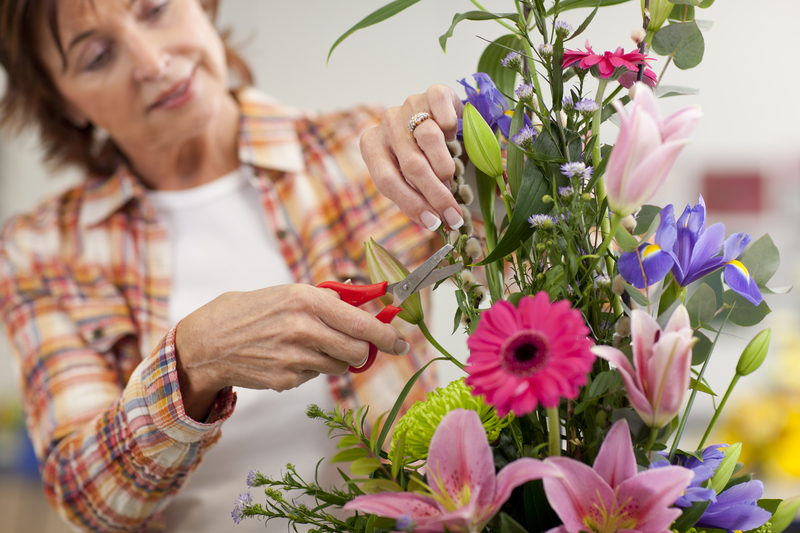7 Unexpected Facts About Tulips to Explore
Posted on 25/08/2025
7 Unexpected Facts About Tulips to Explore
Tulips are among the world's most recognizable and cherished blooms, gracing gardens and vases across the globe. Yet, there's much more to these vibrant flowers than meets the eye. In this comprehensive article, we delve deep into seven unexpected tulip facts that will surprise and intrigue both avid horticulturists and casual admirers alike. Read on to uncover the rich tapestry of history, science, and allure behind these iconic blossoms.

The Origin of Tulips: Not from the Netherlands!
When we think of tulip flowers, our minds often wander to the stunning fields of the Netherlands. However, the origins of tulips are far from Dutch soil. Did you know tulips are native to Central Asia? Specifically, the mountainous regions of modern-day Kazakhstan, Kyrgyzstan, Uzbekistan, and Tajikistan were home to wild tulip species long before they appeared in European gardens.
Wild Tulips in Central Asia
- Tulipa gesneriana, the ancestor of many modern hybrids, was first cultivated by the Ottomans of Turkey.
- Nomadic tribes and Persian poets referenced tulips centuries before the Dutch tulip mania began.
- The flower's name is believed to come from the Persian word "delband", meaning turban, due to the blossom's resemblance to the headwear.
This fascinating history demonstrates that while the Netherlands became synonymous with tulip cultivation, the true roots of these flowers run much deeper into the heart of Asia.
Tulip Mania: The World's First Economic Bubble
One of the most famous--and unexpected--chapters in tulip history is the period known as Tulip Mania in the early 17th century. This tumultuous era saw these prized blooms ignite one of the first recorded speculative bubbles in financial history.
How Far Did the Tulip Craze Go?
- By 1637, the price of certain rare tulip bulbs soared to more than 10 times the annual income of skilled craftspeople.
- Some single bulbs were traded for houses in Amsterdam's most desirable neighborhoods!
- The market dramatically collapsed almost overnight, leaving fortunes lost and the Dutch economy in turmoil.
This episode firmly established the tulip's place in economic lore, making it a symbol of both beauty and the perils of unchecked speculation.
Tulips: A Symbol Rich in Meaning
Not only are tulips beautiful, but they are also loaded with symbolism and meaning in various cultures. Red tulips are universally recognized as declarations of love, while different colors communicate their own significance.
The Secret Language of Tulip Colors
- Red Tulips: Stand for true love and passion.
- Yellow Tulips: Once implied hopeless love, but now represent cheerfulness and sunshine.
- White Tulips: Express forgiveness or purity.
- Purple Tulips: Associated with royalty and admiration.
- Variegated Tulips: Once considered a compliment for beautiful eyes!
This richly nuanced symbolism adds a layer of meaning to every bouquet, making tulips popular gifts for many occasions and emotions.
The Botany of Tulips: More Than Just a Pretty Flower
When it comes to tulip plant facts, few know about their unique biological qualities. Each tulip corm is a marvel of nature's engineering, equipped to survive harsh winters and bloom gloriously again each spring.
Anatomy and Adaptation of Tulip Flowers
- Perennial Power: Although often grown as annuals, tulips are naturally perennial and can rebloom for several years under proper conditions.
- Temperature Triggers: Tulip bulbs require a period of cold dormancy to flower, a trait evolved to survive frigid mountain climates.
- Sunlight Seekers: These flowers are heliotropic, meaning their blooms often follow the movement of the sun.
- Sturdy Stems: Despite their elegant appearance, tulip stems are impressively strong, holding up even in gusty springtime winds.
Understanding these remarkable adaptations deepens our appreciation for what might otherwise seem like a simple garden bloom.
There Are More Tulip Varieties Than You Think
How many types of tulips can you name? It might surprise you to learn that over 3,000 registered tulip varieties exist today, each boasting unique shapes, colors, and blooming patterns. The diversity of the tulip family is truly astounding.
Major Tulip Groups
- Single Early: Classic forms that bloom in early spring.
- Darwin Hybrids: Renowned for their large and long-lasting flowers.
- Parrot Tulips: Exceptionally ruffled and fringed petals.
- Fringed Tulips: Notable for their lacy edges and unique silhouette.
- Lily-Flowered Tulips: Defined by their pointed petals and elegant curves.
With so much variety, tulip lovers can find a bloom for every mood, from understated elegance to spectacular showstoppers.
Tulips Have Culinary and Medicinal Uses
Tulips aren't just beautiful--they're edible, too! During times of hardship, such as World War II, Dutch citizens turned to tulip bulbs for sustenance. Though not commonly eaten today, tulip petals and bulbs have found their way into recipes and traditional medicine in various cultures.
Surprising Uses for Tulips Beyond the Vase
- Edible Petals: Some tulip petals can add color and a mildly sweet flavor to salads or desserts. However, not all varieties are safe, and proper identification is crucial.
- Medicinal Properties: Historically, tulip extracts have been used to treat coughs and colds in folk remedies.
- Natural Dyes: The pigments from tulip flowers can be used to create natural textile dyes.
Note: Before consuming any tulip parts, consult an expert to avoid toxicity, as some varieties may be harmful if ingested.

Tulips Influence Art and Culture Around the World
Few flowers have left as deep an impression on human culture as the tulip. From Ottoman-era ceramics to Dutch Golden Age paintings, and through to modern design, the tulip flower has become an enduring motif.
How Tulips Shaped Art and Fashion
- Ottoman Inspiration: Tulips symbolized abundance and prosperity in Ottoman art, appearing in tiles, carpets, and manuscripts.
- Dutch Masters: Artists like Rembrandt and van der Neer immortalized tulips in striking still-life paintings.
- Modern Fashion: Tulip motifs grace fabrics, accessories, and even architecture, thanks to their unmistakable elegance.
- Festivals Worldwide: The annual tulip festivals in places like Istanbul, Ottawa, and Keukenhof Gardens attract millions of visitors who celebrate these blooms in all their glory.
Whether as inspiration for a masterpiece or the centerpiece of a spring celebration, tulips hold a deep, colorful place in the collective imagination.
Conclusion: The Everlasting Allure of Tulips
Tulips are much more than just pretty petals. From their unexpected origins in Central Asia to their pivotal role in economic history, culinary intrigue, cultural impact, and ecological marvels, these captivating flowers have stories to tell beyond their iconic appearance. The next time you see a tulip in bloom, remember you're looking at a flower with a global journey, a tumultuous past, and a vibrant presence in both nature and human creativity.
Whether you grow them in your garden, gift them in a bouquet, or admire them in art, exploring these seven surprising tulip facts will deepen your appreciation for one of the world's most beloved and storied flowers.
Frequently Asked Questions About Tulips
- Are tulips easy to grow?
Yes! Most tulip varieties are hardy and straightforward to plant, needing only a cold period and well-drained soil. - How long do tulip blooms last?
Typically, tulip flowers bloom for 1-2 weeks, depending on weather conditions and the specific variety. - Can I grow tulips indoors?
With the right chilling and forcing techniques, tulips can be successfully grown indoors for winter and early spring blooms.
Ready to discover more about tulips, from care tips to fascinating tales? Stay tuned for more in-depth articles on this stunning flower, and bring the magic of tulips into your own life!
Latest Posts
7 Unexpected Facts About Tulips to Explore
Long-Lasting Poinsettias: From Bloom to Thriving
Harness the Power of Orchids at Home







